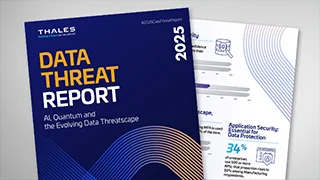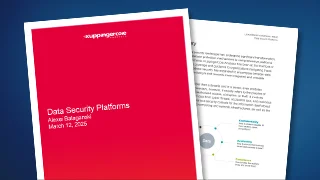Monitor unstructured data at scale
Thales File Activity Monitoring (FAM) helps organizations secure unstructured data across servers, cloud services, and file shares.
With real-time access tracking, automated classification, and AI-driven insights, FAM enables compliance, detects insider risks, and provides deep visibility into sensitive file activity—all through an intuitive dashboard and seamless deployment.
What our customers are saying
Thales' innovative approach to File Activity Monitoring tackles key challenges like blind spots in hybrid environments, offering real-time visibility and smart anomaly detection — a potential game-changer for teams overwhelmed by false positives. By striking the right balance of depth and simplicity, FAM shows promise in helping us strengthen the SOC without added complexity. With tighter SIEM integration, it can sharpen response and let teams focus on what matters most. We’re excited to see how FAM evolves and enhances our data security.”
Unmatched visibility and control over unstructured data
Gain visibility, meet compliance, and detect threats across all your unstructured data assets.
Monitor unstructured data access in real time across servers, cloud, and file shares
Track every file access event across your environment to uncover gaps and ensure complete coverage.
Ensure compliance with automated auditing and sensitive data classification
Continuously audit and classify unstructured data to meet regulatory requirements with minimal effort.
Detect threats and insider risks with deep visibility and AI-driven insights
Spot anomalies, policy violations, and insider threats faster with intelligent, context-rich analysis.
Gain control and reduce risk with AI-powered file monitoring
Organizations struggle to protect unstructured data—files, emails, and cloud content—scattered across systems. Thales File Activity Monitoring delivers real-time visibility, compliance automation, and threat detection to secure sensitive data at scale.
Continuously monitor unstructured data activity across severs, file shares, and cloud storage. Track successful and failed access attempts, detect anomalies, and maintain full audit trails—ensuring you never lose sight of how and where sensitive data is accessed.
Automatically scan your environment to locate and classify sensitive data—including PII, financial records, and regulated content. Support for continuous scanning ensures newly created files are quickly categorized and protected, enabling better governance and faster incident response.
Easily generate audit-ready reports that demonstrate compliance with regulations like GDPR, HIPAA, and PCI DSS. Thales FAM retains historical logs, enhances them with classification context, and enables on-demand dashboards for auditors, reducing manual reporting effort.
Leverage Generative AI to detect risky behavior, uncover policy violations, and accelerate investigations. The Data Security Assistant analyzes access patterns and streamlines incident triage, helping security teams act fast and reduce exposure from both internal and external threats.
View, filter, and explore file activity through an intuitive dashboard that consolidates insights across data types and sources. Instantly assess risk exposure, sensitive file locations, and audit trends to prioritize action and optimize your security posture—all from a single pane of glass.
As unstructured data grows rapidly across distributed environments, organizations need more integrated ways to track and safeguard their most sensitive information. With File Activity Monitoring, Thales reinforces its leadership in enterprise data security by delivering real-time insight, intelligent automation, and unified visibility through a single, powerful platform.”

Related resources
Frequently asked questions
How can we protect unstructured data?
By using strong encryption (both at rest and in transit), fine-grained access controls (role-based or attribute-based), and data loss prevention (DLP) tools combined with continuous monitoring and regular backups.
What are unstructured data solutions?
Solutions include object storage platforms (e.g., Amazon S3, Azure Blob Storage), data lakes and lakehouses, NoSQL databases (e.g., MongoDB, Couchbase), and content management systems equipped with metadata tagging and indexing capabilities.
How do you solve unstructured data?
You tackle unstructured data by implementing automated classification and metadata extraction, indexing for searchability, and employing analytics or AI/ML tools to derive structure and insights.
What is the best way to store unstructured data?
The best approach is to use scalable, cost-effective object storage with rich metadata support—often via a data lake or distributed file system—so that you can manage, secure, and analyze the data efficiently.




